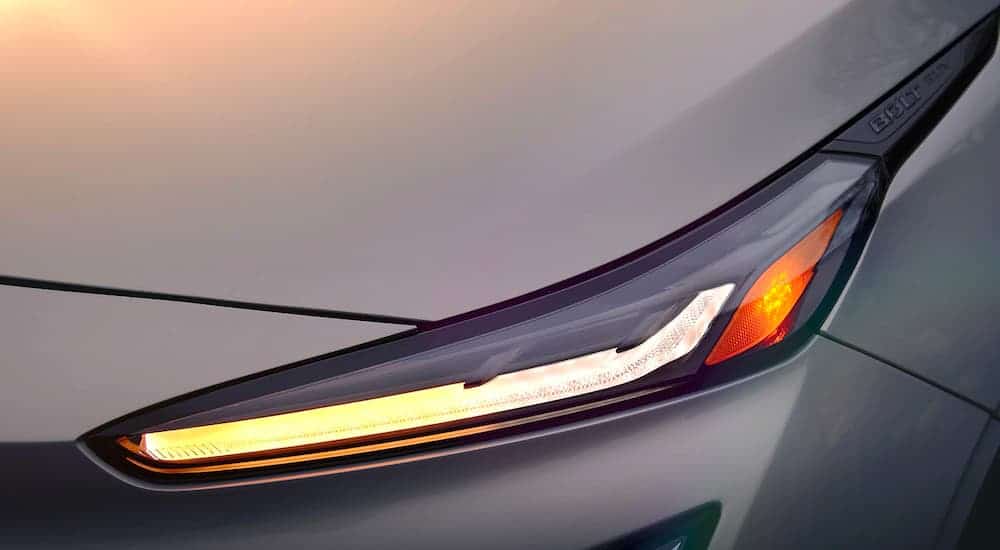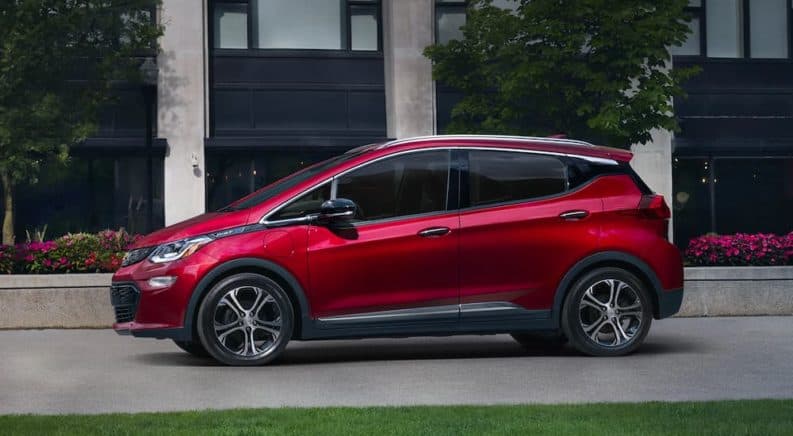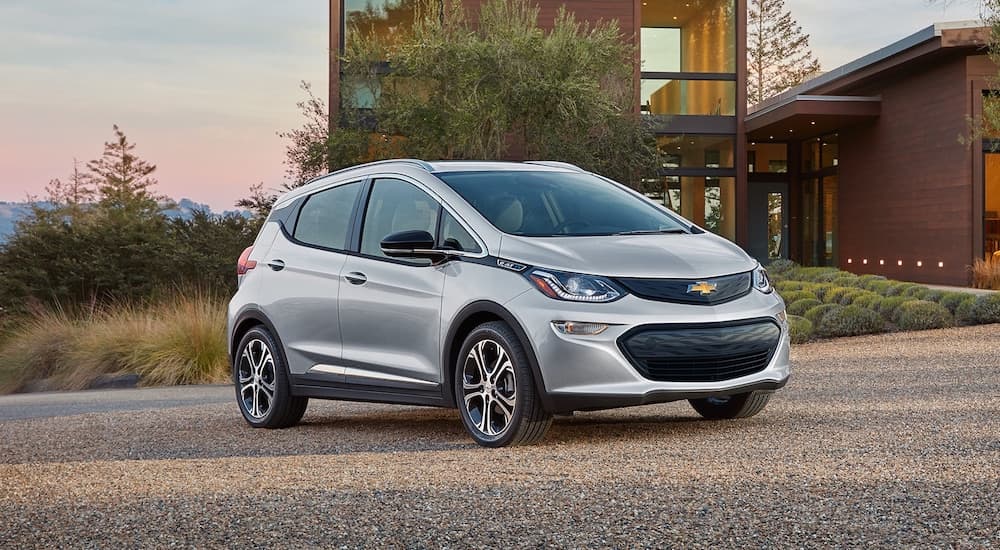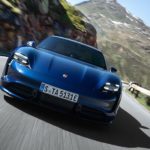The automotive industry became engaged with the concept of using less fuel in the 1970s when oil and fuel became difficult to obtain due to strained relations with the oil-producing areas of the world. Since then, increasing fuel economy has always been on the back of the American automotive industry’s mind. It wasn’t long before companies started releasing hybrid, and later electric vehicles that get better fuel economy. Now almost every automotive company has a line of environmentally friendlier vehicles, like the Chevy EVs.
There are plenty of reasons to pursue the design of vehicles that use less fuel. As fuel prices fluctuate, vehicles with a higher fuel economy sell better. Everyone wants a little more bang for their buck, so to speak. Everyone also wants higher performance without sacrificing that fuel economy, which has led to mild hybrid and “eco” features in all vehicles, from SUVs to Heavy Duty trucks. We all need to drive further, do more, and look cool while doing it. Furthermore, with concerns about the environment hitting an all-time high, a “green” vehicle with fewer emissions and less fossil fuel consumption could help us lower our environmental impact.
Electric Progress
The electric car has actually been an ongoing American experiment since 1890, but in recent years, major auto manufacturers have been revisiting this project with gusto. While mass-produced hybrid electric cars have only been around since 2000, thanks to the Toyota Prius, most manufacturers have merely dabbled in electric and hybrid vehicles. Some drivers feel that stopping to charge after a certain number of miles is more complicated than stopping for fuel. Others feel that electric vehicles lack the pep and drivability of gasoline-powered models. Still, these opinions give automotive manufacturers a base from which they can strive to improve.
Chevrolet has made several announcements over the past few years to indicate that they are more invested than ever in creating a full line of electric vehicles. In fact, they might go so far as to claim that electric cars are the future of the automotive world. But are they? Can Chevrolet convince Americans to “go electric?”

The Latest News From Chevrolet
In 2017, CEO of General Motors Mary Barra indicated that GM was committed to a goal of creating 20 zero-emissions “desirable and profitable vehicles” that could handle a range of over 300 miles. The original delivery date of this project was the model year 2021. Unfortunately, we’re not quite there yet, though the 2020 Chevrolet Bolt is doing its absolute best with a range of 259 miles. Still, though the timeline has changed, the project focus has not.
Throughout 2019 and 2020, Chevy has teased an all-new EUV. What is an EUV? Think of an SUV, only electric. Think the Chevy Bolt, only with more space and a cool aerodynamic-yet-upright new age appearance. Though Chevy claims that the Bolt EUV will make its grand debut in the Summer of 2021, only teasers have been released to date. Chevrolet has provided a few renderings of the new EUV, and some claim to have seen prototypes driving on the streets of Japan. We’ve even had a sneak peek at the Power Flow screen. This informational display includes details about regenerative braking use, as well as critical details such as the battery charge level.
Chevrolet has also confirmed that the Bolt EUV will be the first electric vehicle to feature Super Cruise technology. Super Cruise allows for hands-free driving, thanks to its onboard database of hundreds of thousands of highway miles across the US and Canada. This technology debuted on Cadillac models, but GM has announced that many vehicles under its umbrella brand will feature Super Cruise in the coming years.
Chevy’s Current EV: The 2020 Bolt
The 2022 Chevrolet Bolt EUV is rumored to take after its smaller-yet-older sibling, the Chevy Bolt. If so, drivers will be able to rejoice at an electric automobile that is a pleasure to drive, easy to own, and not so very different from the gasoline-powered Chevy vehicles they know and love today. The 2020 Bolt has a full charge range of 259 miles, which is enough to get most people through a typical day. With 200 horsepower, it doesn’t take its time getting there, either. This is a significant upgrade from previous years, averaging 21 more miles or 10% more range than prior Bolt models.
As Chevy’s current only all-electric vehicle, the Bolt is somewhat of an oddity, but as Chevy is quick to point out, maintenance isn’t as complicated as it may seem. First, it’s easier than ever to monitor the power supply. The myChevrolet Mobile App includes an Energy Assist feature, which not only helps drivers locate charging stations along the way but navigates the most efficient routes to your destination, and includes mobile charging payment capabilities, as well. There are over 40,000 charging stations across the United States that are compatible with the Bolt, including your own home. Qmerit has partnered with Chevrolet for the installation of home charging systems in an effort to make the process as painless and efficient as possible.
The 2020 Chevy Bolt has three charging options. Level 1 is standard and includes a 120-volt portable charge cord, which can be used anywhere you find a three-prong outlet. An hour of charge provides about four miles of range, so while this would be the slowest charge option for long-distance trips, it’s a perfectly viable way to top off a charge or gain a few miles while you sleep.
Level 2 charging is an available option but requires a public charging station or Qmerit installation of a home charging unit if desired. Level 2 charging includes a 240-volt charging unit, which can provide about 40 miles of power in less than 2 hours, averaging 25 miles per hour of charge. Finally, Level 3, or DC Fast Charging, is only available through public stations currently but can provide up to 100 miles of range in just 30 minutes.
Inside, the Chevrolet Bolt EV includes all the features you’d expect in any other vehicle. From touchscreen infotainment displays, rear vision cameras, heated seats and steering wheels, and even driver assistance features like Lane Change Alert and Side Blind Zone Alert, electric vehicles aren’t significantly different from their gas-chugging brethren. In fact, since technology is rapidly becoming better and better, it’s easy to adapt pretty much all of the features available in gas-powered vehicles and then some to fit into an EV.
An Electronic Future
Though the American public has been somewhat hesitant about embracing a fully electric vehicle, it is clear that automotive manufacturers are fully invested. General Motors has announced a very ambitious electric lineup for the future, including an all-electric Chevy pickup truck by 2025. The concept for this vehicle draws significantly from the existing Silverado models but will be all-electric, courtesy of GM’s newly designed battery stacking platform and the Ultium battery, which offers a capacity ranging from 50.0 kWh to 200.0 kWh. With this battery in a stackable configuration, a range of 300-400 miles is certainly possible, with enough horsepower to accomplish the jobs gas-powered Silverados perform today.
With an all-electric Hummer on the way, as well, it seems that the future has been opened to the possibility of EV roadways before the end of the decade. Will the public buy into the hype? As long as the driveability, reliability, and fun factor are all present, it seems likely that the resistance to an alternate power source will drop, especially when calculating long term fuel savings. The new waves of electric vehicles are exciting, to say the least, and we can’t wait to see what kind of vehicles Chevy is going to release next.





